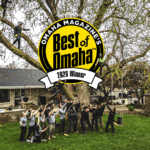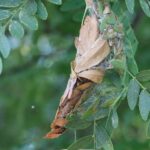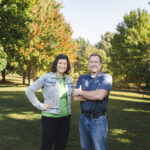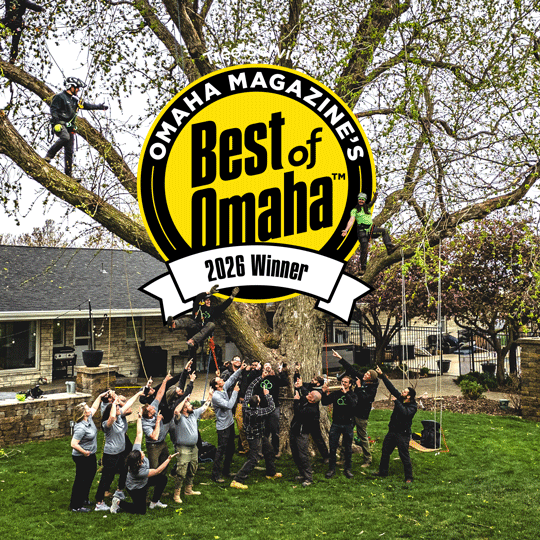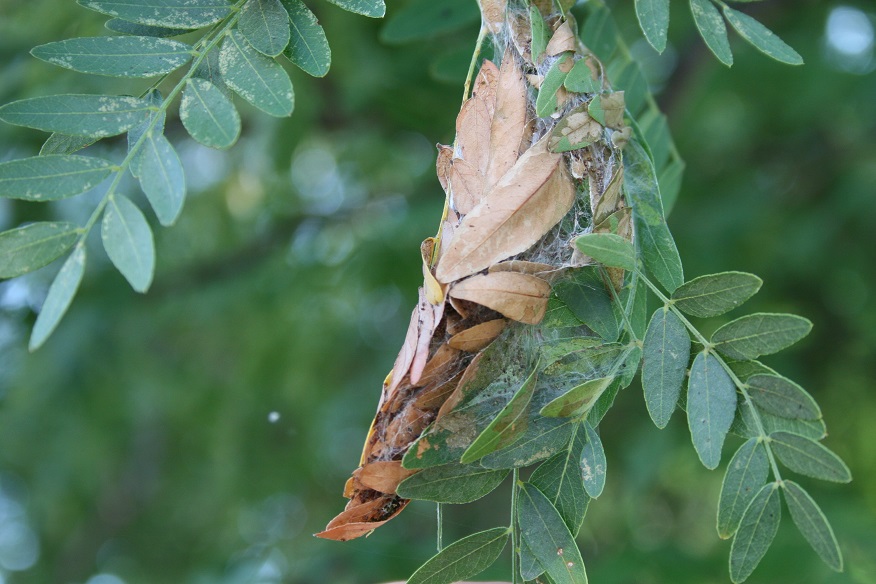We’re seeing it a lot this year. Bur oaks, coveted for their resilience and strength, are looking sickly. Bur Oak Blight could be the culprit, but don’t panic – we can help!
What is Bur Oak Blight?
Bur Oak Blight is a fungal disease that affects bur oaks in the midwest. It’s a fairly new disease, emerging in the 1990’s. We speculate that the particularly rainy spring and summer is making our friend ‘BOB’ feel a little too at-home here in Omaha. More specifically, if the weather is cool and rainy while new leaf shoots are expanding, the leaves could already be infected with the fungus, then show symptoms later in August.

Interestingly, severe symptoms of BOB have been observed only on Quercus macrocarpa var. oliviformis, a variety of bur oak that produces smaller acorns. BOB occurs primarily on naturally established trees, and especially on mature trees on upland sites that appear to be remnants of savannah forests.
What are the symptoms?
- Purple-brown lesions along the middle vein of the leaf
- Wedge-shaped areas of yellowing or dieback
- Leaves turning brown and curling
- Black pustules at the base of the leaf stalk
- Dead leaves remaining on the tree through the winter
- Symptoms typically appear in late July, August and September

What can we do?
If you suspect BOB has paid you a visit, it’s time to call an arborist. We will come assess the damage and check for any secondary infections, then prescribe a fungicidal treatment plan (leaf sprays and/or trunk injection) to treat the infection. These treatments will need to be administered in the spring (May or June) to reduce the effects of BOB in the later summer.
